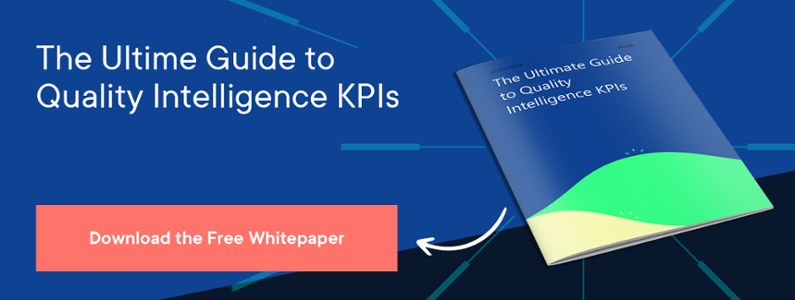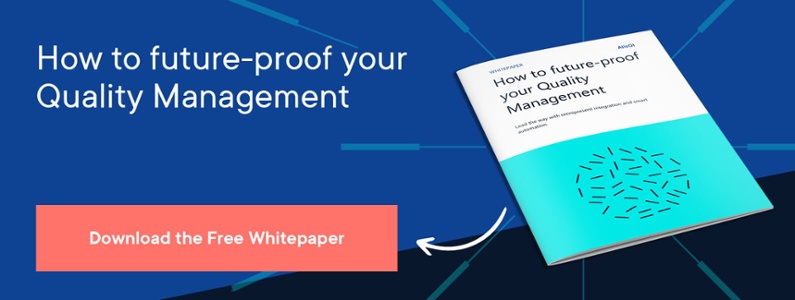Solvers help you monitor quality, apply SPC, manage equipment, and ensure traceability.

Culture is the cornerstone of QM and sustainability

Article by Yvonne Lagrosen, associate professor in Quality Management at Mälardalen University in Sweden
As part of our ongoing blog series on sustainable manufacturing, we invited Yvonne Lagrosen, associate professor in Quality Management at Mälardalen University in Sweden, to tell us about her research on the all-important role of company culture.
How culture is the cornerstone of QM and sustainability
A quarter of a century ago, a groundbreaking academic study1 of sustainable development identified a ‘triple bottom line’ underpinning sustainability: ‘People, planet, and profit’. Since then, we all understand a lot more about what is at stake for our environment (a longer word for planet), but the relationship between profit and sustainability has been completely turned on its head. In 1995, the calculation was: how can we support sustainability and still make a profit? Now the thinking is: unless we are pro-actively sustainable in our outlook and production methods, we will go out of business.
It is one of the ‘people’ aspects of sustainability that has received relatively little academic attention: its relationship with Quality Management (QM), the field of study of my husband and colleague from Linnaeus University, Stefan Lagrosen, and me. We were particularly interested in how businesses could create a culture of sustainability using Lean Manufacturing, and this was the subject of our 2019 research paper.
Although manufacturers and other businesses are now fully on board with the idea and goals of sustainability, research (and real life!) shows time and again that they often struggle to build a strong culture based on quality. Building a quality-based culture is necessary since culture determines the way QM practices are both designed and delivered. Since there are no established academic frameworks to explore the intersection between QM, culture, and sustainability, we set out to study the quality culture of one company as a first step towards formulating such a framework.
This business is an SME with an annual turnover of $7.8m (a little less when we conducted our research). Sky Factory, based in Iowa, designs and manufactures static ‘sky ceilings’ and ‘luminous virtual windows’ that mimic real views of sky and nature in buildings that lack natural sunlight. Its largest markets are healthcare facilities.
The company believes fervently in the neurological benefits of its products and engaged with academia to seek quantitative verification. So, not a run-of-the-mill company. Set up in 2002 as an experiment, the stated aim of its maverick founder was to ignore his business knowledge to create a culture that was beneficial for employees, customers, and investors.
Almost two decades on, Sky Factory employs 39 people, has enjoyed annual growth in revenues of more than 10% (‘profit’), and in 2012, became Iowa’s first entirely solar-powered business (‘planet’).
To find out about the working culture at Sky Factory, we took to the field with a list of four simple questions:
- How do you work with quality in your organization?
- How do you work with sustainability?
- How does learning take place?
- How is the culture of this company?
The aim of these questions was to tease out not just the proclaimed cultural aims of the company (example: the ‘sustainability’ agenda so often trotted out in annual reports) but also its deeper, underlying values as these often have the largest impact on how a company is run.
The responses clustered around six cultural principles:
- transparency
- flat management
- consensus
- service
- performance
- leadership.
The first three are interrelated as engaging employees as owners, not as employees. I elaborate on each of the six pillars below, highlighting how they tie in with Lean Manufacturing and QM.
1. Transparency
Lean Manufacturing derives its effectiveness from a habit, instilled culturally, of continuous and incremental improvement. The ancestor of Lean was the so-called ‘zero defect’ school of QM which ultimately foundered because it created a blame culture and because senior management tended to regard defects, zero or otherwise, as an issue for the factory floor.
At Sky Factory, all employees are embraced as being valuable to all aspects of the business. Apart from HR and remuneration data, all information is open, accessible and distributed uniformly throughout the company. Weekly all-company meetings include a collective review of Sky’s financial and performance metrics. This is not a mere talking shop; significant business issues and decisions are handled at these meetings.
2. Flat management
Before the retirement of the charismatic founder of Sky Factory, there was no hierarchical system of management. His absence created a leadership vacuum which was filled with the appointment of a President and CEO. Apart from these roles, there are no assigned managers or supervisors. There are no job titles because titles label status, which disrupts cultural cohesion. When it comes to business cards or company presentations, employees choose their own job titles.
The company workflow runs with five distinct teams (production, engineering, marketing, finance, and fine art) and individuals rotate between jobs and teams. Moreover, there are cross-functional teams, e.g., one cost-of-goods-reduction team, with members from finance, production, and the engineering team. These are temporary project-based teams often with a duration of six months.
And so everyone owns all aspects of the operation and regularly gets to look at the production workflows with fresh eyes, a key advantage for Lean Manufacturing.
Staff turnover is low at 3%. Employees like flexible deployment and can see the benefits. With the help of LM, Sky Factory has ramped up production and introduced more products with the same number of employees. As one respondent stated: “If we had worked according to the old standards, we would probably have hired an additional four people.”
Lean Manufacturing is also perceived to lead to true workplace vitality. One respondent said: “We use Lean Manufacturing standards, not only for efficiency and cost savings but also for creating that environment of less stress and more time and focus for the quality of our products.”
3. Consensus
All business decisions are made by means of consensus of the entire workforce or within small teams. Employees have full access to Sky Factory’s finances to inform their point of view. The goal of this practice is to get an optimal input of group intelligence, resulting in insightful decisions. Of all the cultural pillars that affect QM, this was seen as the most challenging.
4. Service
The operational philosophy of Sky Factory is best summed up in the motto “We before me” and aims to foster a truly non-contractual or ‘selfless’ service. When it comes to sustainability, Sky Factory goes the extra mile. As we saw, its production line and office run on solar power. In addition, the company has set up a non-profitability research institute to promote sustainable agriculture on its 3.5-acre organic farm. One full-time employee, a farmer, has built an infrastructure of self-supporting systems that promote water retention, soil fertility, and pest control. This project is of educational value as companies and communities come to Sky Factory to be inspired by the garden, its solar array, and cultural ethos. What’s more, the staff have fresh vegetables as an added bonus throughout the year!
5. Performance
Sky Factory puts its money where its mouth is. All full-time employees are involved in a performance-based ownership plan; the goal is to redistribute 40% of the company’s ownership to the employees. Half of the company’s net profit is redistributed to employees and generally paid out monthly. Profit-sharing accounts for at least one-third of total compensation. Our research did not reveal any negative or ambiguous attitudes towards this scheme which was regarded as a driver of performance, aligned with other cultural practices such as flat management and collective decision-making.
6. Leadership
This was added as a cultural pillar after the founder of Sky Factory retired. The cultural aims of the company are ambitious and do rely on inspirational leadership, even if that leadership is handing control to the workforce. The appointment of a President and CEO re-anchored the company’s commitment to empowerment, sustainability, and Lean Manufacturing.
Sky Factory’s approach to learning can best be described as eclectic. Educational programs range from courses taught by experts in the fields of finance, business English, and art history. In one project, the management classic Good to Great by Jim Collins was read one chapter a week and discussed one morning each week for an hour.
In addition, employees interact with business students and members of the local chamber of commerce in business and also visit fares. New employees get a 90-day training and trial period, and a mentor.
Conclusion
Our research had clear limits: we studied just one business, which was not randomly selected, so it is impossible to draw workable conclusions that would stand up to academic scrutiny. More research is needed in the field of QM and sustainability.
However, Sky Factory is a real company in the real world, making products that people want to buy. Its policies of low hierarchical thresholds, shared decision-making and profit-sharing enhance the outcomes of its sustainable and Lean production processes.
Not every manufacturer can run itself the way Sky Factory does, but all manufacturers could improve their QM and sustainability by spending time to build a culture that supports both. This blogpost provides some pointers to some of the cultural elements you could introduce in your organization.
How to prepare for Quality Intelligence?
In this era of smart manufacturing, quality will become smart as well. This transition will not happen overnight and this will not happen in a linear way, but we know that integration and automation play a key role. This white paper presents a springboard to change and asks organizations to self-assess to what extent they are ready for Quality Intelligence and to leverage tomorrow’s possibilities.



